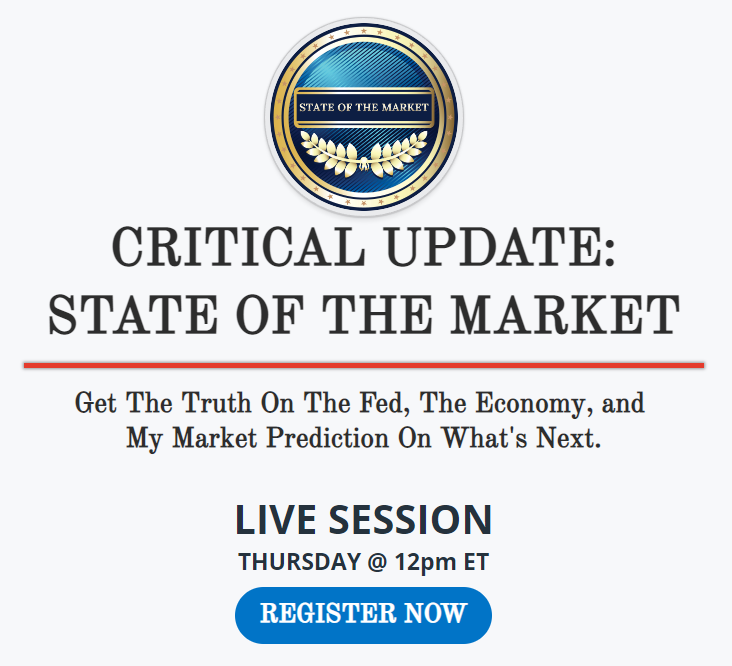S&P 500 Downside Insurance: Is Now The Time To Buy Protection?

Table of Contents
Understanding S&P 500 Downside Insurance Options
What is S&P 500 Downside Protection?
Downside protection, in the context of the S&P 500, involves strategies designed to limit potential losses in your investments if the market declines. It's a crucial element of risk management, allowing investors to participate in potential market gains while mitigating the risk of significant capital erosion. Several methods provide this protection:
- Put Options: These give you the right, but not the obligation, to sell S&P 500 index funds or ETFs at a specific price (the strike price) before a certain date (the expiration date).
- Covered Puts: You already own the underlying asset and sell a put option, generating income while offering downside protection if the price falls below the strike price.
- Cash-Secured Puts: You sell a put option and set aside enough cash to buy the underlying asset if the option is exercised. This strategy offers potential income and downside protection.
- Protective Puts: You buy put options to protect your existing long positions in S&P 500 investments. This acts as insurance against a price decline.
- Collars: A collar involves simultaneously buying put options and selling call options on the same underlying asset, creating a range-bound strategy. This limits both upside potential and downside risk.
- Inverse ETFs: These exchange-traded funds (ETFs) aim to profit inversely from the performance of the S&P 500. They can provide a form of downside protection but carry their own set of risks.
Each method has benefits and drawbacks regarding cost, potential profit, and risk. Careful consideration of your individual financial goals and risk tolerance is paramount.
Factors Affecting the Cost of S&P 500 Downside Insurance
The price (premium) of S&P 500 downside insurance fluctuates based on several key factors:
- Implied Volatility: This reflects the market's expectation of future price fluctuations. Higher implied volatility leads to higher premiums for options contracts.
- Time to Expiration: Options with longer expiration dates generally command higher premiums due to the increased uncertainty over a longer period.
- Strike Price: The further out-of-the-money the strike price (further below the current market price for put options), the lower the premium; however, the less protection it offers.
- Market Sentiment and Conditions: Broader market conditions and overall investor sentiment significantly influence options pricing. During periods of high uncertainty, premiums tend to be elevated.
Understanding these factors is crucial for making informed decisions about purchasing S&P 500 downside insurance.
Assessing the Current Market Environment for S&P 500 Downside Protection
Analyzing Current Market Risks and Opportunities
Before considering S&P 500 downside protection, a thorough assessment of the current market is necessary. This includes:
- Economic Indicators: Analyzing key economic indicators such as inflation rates, GDP growth, unemployment figures, and interest rates provides insight into potential market movements.
- Geopolitical Factors: Global political events and international relations can significantly impact market volatility. Understanding these factors is crucial for assessing risk.
- Market Corrections and Uptrends: Evaluating historical market data and identifying potential trends can help predict future market corrections or uptrends. Analyzing past performance, however, does not guarantee future results.
By considering these factors and consulting reliable financial news sources, you can better understand the potential risks and opportunities present in the market.
Evaluating Your Personal Risk Tolerance
Your individual risk tolerance is a critical factor.
- Determine Your Risk Profile: Consider your investment timeline, financial goals, and comfort level with potential losses. Are you a conservative, moderate, or aggressive investor?
- Risk Tolerance and Downside Protection: Conservative investors with a lower risk tolerance may find downside protection more valuable, while aggressive investors might prefer to accept higher risk for potentially greater returns.
Honest self-assessment is essential for making sound investment decisions.
Strategies for Implementing S&P 500 Downside Insurance
Developing a Downside Protection Strategy
Implementing a downside protection strategy requires careful planning:
- Choose Your Method: Decide whether put options, protective puts, collars, or inverse ETFs best align with your risk tolerance and financial goals.
- Selecting Strike Prices and Expiration Dates: Carefully select strike prices and expiration dates that provide adequate protection without excessively high premiums. Consider your investment horizon.
- Diversification: Don't rely solely on one downside protection strategy. Diversification across different asset classes is crucial for managing overall portfolio risk.
Always thoroughly understand the specifics of the chosen strategy before implementation.
Monitoring and Managing Your Downside Protection
Ongoing monitoring and adjustment are crucial:
- Track Performance: Regularly monitor the performance of your chosen downside protection strategy and the overall market conditions.
- Adjust Your Strategy: Based on market movements and changes in your risk tolerance, you may need to adjust your strategy by modifying positions or exiting entirely.
- Strategic Exiting: Develop a clear exit strategy for your downside protection positions to maximize your returns while managing risk.
Active management is key to maximizing the benefits of your S&P 500 downside insurance.
Conclusion: Making Informed Decisions about S&P 500 Downside Insurance
Deciding whether to purchase S&P 500 downside insurance requires careful consideration of several key factors: your risk tolerance, the current market environment, and the specifics of various insurance options. Understanding the potential costs and benefits of each strategy is paramount. Remember that past performance doesn't guarantee future results. This analysis should not be considered financial advice.
We strongly encourage you to carefully evaluate your need for S&P 500 downside insurance. Before implementing any strategy to protect your S&P 500 investments, consider consulting with a qualified financial advisor who can help you tailor a plan that aligns with your individual financial goals and risk profile. Secure S&P 500 downside protection by making informed decisions and seeking professional guidance.

Featured Posts
-
 Feltri Riflessioni Sul Venerdi Santo
Apr 30, 2025
Feltri Riflessioni Sul Venerdi Santo
Apr 30, 2025 -
 Tramb Yhdhr Mstqbl Knda Mrtbt Baldem Alamryky
Apr 30, 2025
Tramb Yhdhr Mstqbl Knda Mrtbt Baldem Alamryky
Apr 30, 2025 -
 Millions Stolen Chilean Migrants Role In Nfl Heists Under Scrutiny
Apr 30, 2025
Millions Stolen Chilean Migrants Role In Nfl Heists Under Scrutiny
Apr 30, 2025 -
 Uk Eurovision Hope Remember Mondays Anthem Against Online Bullying
Apr 30, 2025
Uk Eurovision Hope Remember Mondays Anthem Against Online Bullying
Apr 30, 2025 -
 Kideia Papa Fragkiskoy Tramp Melania Kai I Ekpliksi Dipla Se Stenoys Synergates Zelenski
Apr 30, 2025
Kideia Papa Fragkiskoy Tramp Melania Kai I Ekpliksi Dipla Se Stenoys Synergates Zelenski
Apr 30, 2025
